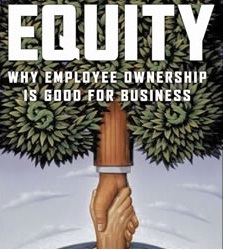People usually tend to mix the concepts of Sweat Equity Shares and Employees Stock Options, but it should be well kept in mind that both the concepts differ a lot from various aspects.

Sweat Equity shares are those shares issued by a company to its directors or employees at a discount or for consideration other than cash, for providing know-how, or IPR, or value additions, by whatever name called.
An ESOP (Employees Stock Option Plan) on the other hand is an option given to the employees to buy certain number of shares of the Company at a pre-determined price.
One of the basic differences between Sweat Equity and ESOP is Sweat Equity can be issued for consideration other than cash while ESOP has to be issued only in lieu of cash.
UNDERSTANDING SWEAT EQUITY AND ESOP:
| Basis | Sweat Equity | Employees Stock Option (ESOP) |
| Governing Law | Governed by Section 54 of the Companies Act 2013, read with Rule 8 of Companies (Share Capital and Debenture) Rules 2014. | Governed by Section 62(1)(b) of the Companies Act 2013, read with Rule 12 of Companies (Share Capital and Debenture) Rules, 2014. |
| Issue Norms | Company can issue Sweat Equity shares only after remaining in business for 1 year. | No such norm, Company can grant ESOP at any point of time after incorporation. |
| Eligibility | Can be issued to Directors, Employees, or any Officers of the Company. |
Can be issued to Employees, Officers, and Directors not holding 10% or more equity shares of the Company. Cannot be issued to:
iii) Directors holding 10% or more equity shares in the Company. |
| Period of Holding | It shall be reckoned from the date of allotment or transfer of such equity shares. | It shall be reckoned from the date of Exercise of Options. |
| Consideration | Can be paid partly in cash and partly through services rendered or fully non-cash consideration. | Consideration has to be paid through cash only. |
| Lock-in Period | It has a compulsory lock-in period of 3 years. | There is no lock-in period. |
| Restrictions on Issue | Sweat Equity Shares cannot be issued for more than 15% of the paid-up equity share capital in a year or shares of the value of 5 crores; whichever is higher. | There are no such restrictions in issuance or grant of ESOP. Generally 10% to 15% of the equity is reserved for ESOPs. |
|
Pricing Guidelines |
The sweat equity shares to be issued shall be valued at a price determined by a registered valuer as the fair price giving justification for such valuation. Further, the valuation of IPR, or Know-how, or value additions for which equity shares are to be issued shall also be carried out by a registered valuer with proper justification. And both the valuation reports should be sent to the shareholders along with notice calling the General Meeting. | There is no pricing guideline defined for issuance or grant of ESOP. |
| Tax Impact | Sweat Equity shares allotted to employees can resort to gifting of same shares to the members of family who does not have taxable income and such transfer shall not be charged under the head Capital Gains. |
Gift of shares allotted under ESOP will be treated as transfer and shall be charged under the head Capital Gain. |
| Register | The Company shall maintain a Register of Sweat Equity Shares in Form SH-3. |
The Company shall maintain a Register of Employees Stock Options in Form SH-6. |
For assistance in ESOPs, visit taxmantra.
_______________________________________________________________________________________

 Toll Free:
Toll Free:  Contact Us
Contact Us

